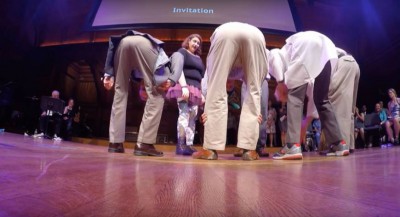Daniela presented work from the lab at ECVP in Trieste. An abstract of her presentation is below.
Gaze and attention:
mechanisms underlying the therapeutic effect of
smooth pursuit eye
movement training in spatial neglect
Daniela Balslev and Alexandra
Mitchell
Left smooth pursuit eye movement training
(LSPT) in response to optokinetic stimulation has become a promising
rehabilitation method in spatial neglect. The mechanisms underlying the
therapeutic effect however, remain unknown. During LSPT, errors in visual
localization in the direction of the eye movement indicate changes in the gaze
direction estimate. Here we show that in healthy participants LSPT causes not
only a shift in the perceived direction of gaze, but also a corresponding
displacement in the allocation of attention. Both changes outlast the period of
optokinetic stimulation. This result refines theoretical models for spatial
attention by highlighting a tight coupling between attention and gaze.
Furthermore, it forms a first step for establishing a causal link between the
adaptation in the sensorimotor gaze signals and the recovery in spatial
neglect.

 It is very difficult to manipulate the rotation signals from the eye
It is very difficult to manipulate the rotation signals from the eye Alex and Daniela are attending the
Alex and Daniela are attending the 
